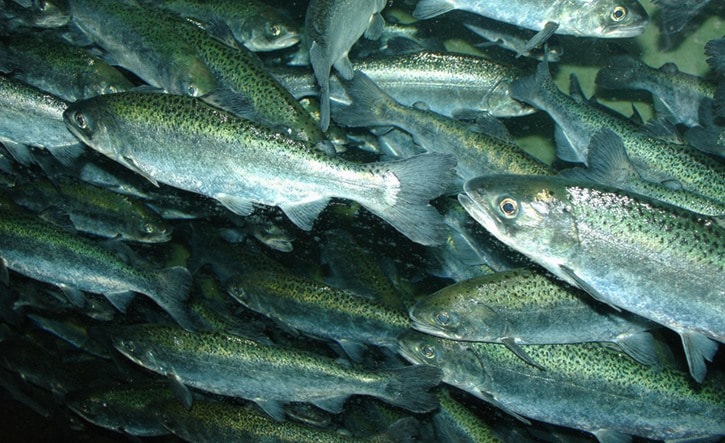Chinook salmon have returned to the Cowichan River in numbers not seen in more than 10 years.
Beth Pechter, Fisheries and Oceans Canada resource management coordinator for East Coast Vancouver Island, said the number of chinook salmon in the river this year far exceeded her department’s expectations. Just how much better will never be fully known because the counting fence in the Cowichan River was destroyed and washed away last month.
“The heavy rainfall caused flooding and storms as you’re well aware, and blew out the fence on Oct. 15, so we lost it. But up until that period we had a total of 9,100 chinook [come] into the Cowichan River which is the largest in at least the last 10 years,” she said, adding that the last time the river has seen such numbers could be much more than a decade ago.
“I’d have to go back to see how much further, but at least the last 10 years… A good year is when we get 6,500 returning to the Cowichan so this is like one and half times what we would consider a good year.”
Pechter said counting the chinook in the Cowichan River begins in July and goes until around mid-October.
With water levels in the river so low this summer, Pechter said she and her colleagues suspect many of the chinook held back in the marine environment until river levels increased again. But as for what caused this year to be an especially strong one, Pechter said the answer is not clear.
“We don’t know why. There’s been a lot of changes to the ocean environment in recent years, like the last year or two. We had a huge El Niño event. We saw different species out there,” she said.
She also noted that Cowichan Tribes and the Cowichan Watershed Board “have done a lot of work in the Cowichan on habitat and improving the spawning habitat for chinook,” and this year there was not only a fishing closure on the Cowichan River from July until around Labour Day, but also no salmon fishing in Cowichan Bay and satellite channels.
However, salmon returns were not universally so plentiful. Returns to the Fraser River, for example, reached historic lows this year. And on the West Coast of Vancouver Island, the numbers were lower than expected.
“Our expectation for how many chinook were coming back for the West Coast of Vancouver Island were for one of the better returns in a long time,” said Wilf Luedke, DFO chief biologist for the South Coast. “So everybody got psyched about lots of fish coming back. And the fishing was very poor.”
According to Luedke, DFO staff were noticing that caught salmon on the West Coast were full of tiny pelagic rockfish. There had been a small boom of them in the waters there.
“So these adult chinook that were coming back, we were like, ‘Wow, there’s this banquet in front of them.’ So they didn’t take many hooks,” said Luedke. “It’s all [about] ocean conditions. What’s bad for one species might be good for another.”
Luedke said they are seeing good returns in the rivers that DFO checked on the West Coast, just not quite to the levels they originally forecast.
Jeremy Maynard, a certified tidal angling guide and past chair of the Sport Fishing Advisory Board, said it’s important not to characterize all sport fishing in the region as having been bad this year. It all depends on where you fish, he said.
“It’s fair to say that the return of chinook salmon to rivers on the West Coast of Vancouver Island was much less than expected. That’s different from ‘poor sport fishing on the West Coast of Vancouver Island,’” he said. “It’s true that at times it was poor in places — it was particularly not good in Nootka Sound, for example — but I guide not far away in Kyuquot and we generally had some good, occasionally very good, fishing.”
